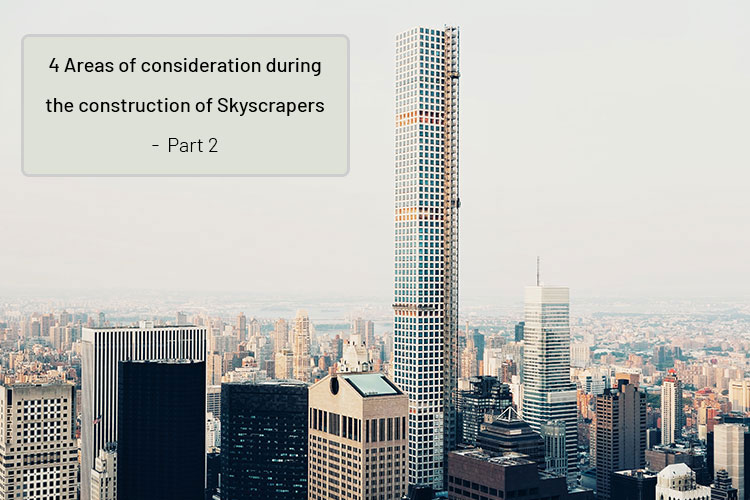4 Areas of consideration during the construction of Skyscrapers- Part 2

In the preceding article we have already discussed that construction of skyscrapers is no simple task and there are various factors that must be kept in the mind. We have also discussed the importance of a solid base which could hold the gigantic structure as well as how do architects and engineers look to deal with the structure’s interaction with the climatic conditions. In this article will be looking at the MEP systems of the building and how they are installed and how they keep them functional. We will also be looking into the construction of skyscrapers and how can BIM Services actually help create them.
The MEP Systems:
The other problem when it comes to construction huge skyscrapers is with regards to water, gas, electricity, sewage etc. This would not be a huge challenge if it had to be horizontally moved but vertically it poses a challenge. There are miles of ducting which carry cold air throughout the structure. Moving the air around such gargantuan skyscrapers requires a lot of power and coordination. Every few floors there is a mechanical room which houses pumps powerful enough to cool the buildings. It is also not possible to have onsite chiller plants that provide enough cold water that cools the air and in most skyscrapers it is a common practice to have them in a different location and supply cold water through underground pipes. To source enough water to sustain everyone in the building is a difficult task and the water needs to be moved upwards. Trying to pressurize the water to go all the way up in one hit is very difficult and consumes a lot of energy. Thus, in the same mechanical rooms there are water storage tanks. The water is stored in these tanks before being pumped out. Similarly, the water that goes up must be also brought down and if the water were to cascade the full height of the building enormous pressure would be built up in the pipes. Here the same solution is applied that the water is brought down in a controlled way and stored in sewage holding tanks.
Table of Contents
The necessity of Virtual Construction:
Building Information Model is one of the biggest assets that engineers and architects have when it comes to designing and construction skyscrapers. Right from the start when it comes to laying the groundworks BIM is able to precisely communicate ground conditions and project risks when planning work. With is it possible to building a 3D model which takes into considerations the data that is received from borehole logs, geological mapping and trial pit data. Similarly, by merging virtual and augmented reality with 3D model allows to run simulations that would make it possible to understand the building integrity during an earthquake or a storm.
Having multiple pipes and ducts running through the building could result in potential hard or soft clashes during onsite construction. It is here that BIM Coordination Services are utilized to ensure that there are no inter or intra disciplinary clashes which would here result in rework and monetary loss. Along with aiding with the key challenges faced during construction of skyscrapers the very process of virtual construction brings about an ease in during lifecycle of the building. It enhances collaboration ensuring that every stakeholder is on the same page, it improves productivity, reduces conflicts and enables fast modifications if need arises etc.
Conclusion:
Thus, when it comes to the construction of skyscrapers it takes what is perhaps one of the most difficult building to construct and streamlines the whole process allowing engineers and architects to manage and work effectively.